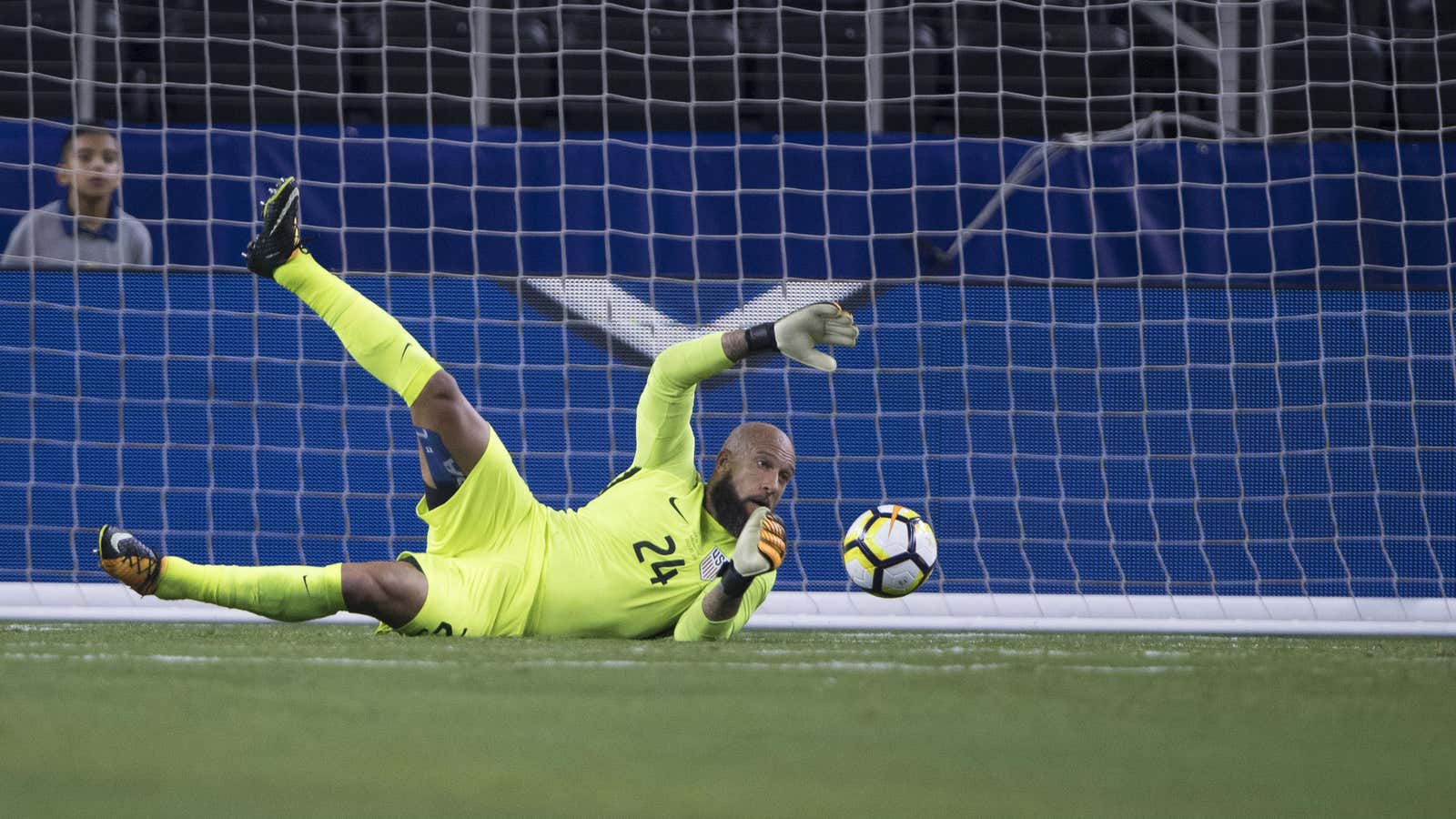It’s well known that the US did not qualify for the 2018 soccer World Cup. Less discussed is the fact that the data suggest this year is the culmination of a long trend of faltering American media coverage of international soccer, despite the relative success of the US national team on the world stage (until now).
An analysis of news coverage, based on LexisNexis data of news stories published in the six months preceding the past dozen World Cups, shows that that American media interest in World Cup soccer essentially peaked in 1994, when the US hosted the tournament. It then flatlined for a decade and a half, and is now plummeting.
This year’s World Cup is the first since 1986 that the Yanks didn’t make the cut, and it’s reasonable that such a huge disappointment could turn off an entire country from the sport. Perhaps, though, if the US truly aspires to the position of soccer powerhouse, the country may want to consider paying attention to the pitch even when the Stars and Stripes aren’t on it.
Given the US’s poor showing leading up to the 2018 tournament, it makes some sense that the sports-media apparatus dialed back its coverage of soccer. It’s less understandable that media interest was already waning in the months leading up to the 2014 World Cup, in which the US fielded a team competitive enough to advance to the knockout stage from a tough group that included eventual tournament champions (and second-ranked) Germany and fourth-ranked Portugal.
Submitting to defeat—on the pitch as well as with the TV remote control—may condition a country for more misery in subsequent years. The US is so used to dominance, or at least a respectable performance on the rare occasion when it is the underdog, that even a slight bump in the road feels insurmountable.
Consider, on the flip side, the media coverage trends in Uruguay, Argentina, Spain, and Italy. Lexis Advance Research doesn’t have great records of non-English-language, but even over a limited time frame, there is a clear difference between the interest in the World Cup in the media of these countries and in that of the US:
All of these teams have, at some point won the World Cup. As The Economist eloquently points out, Uruguay, Argentina, and Spain are three of the highest overachievers in international play considering their population and resources; Italy is somewhere in the middle of the pack, but is especially notable given that its national team didn’t qualify for the 2018 tournament, and yet media coverage is about where it was in 2006—the year the Azzurri won it all.
Meanwhile, the US punches well below its weight in international soccer; as one of the world’s biggest and wealthiest nations, it should dominate regularly—even given soccer’s standing in the country as a fourth or fifth step-sibling to American football, basketball, baseball, and sometimes even hockey. Perhaps if the media covers the 2018 World Cup as though the USMNT were playing in it, the country’s 2026 team will compete at a level commensurate with the country’s wealth and resources.
